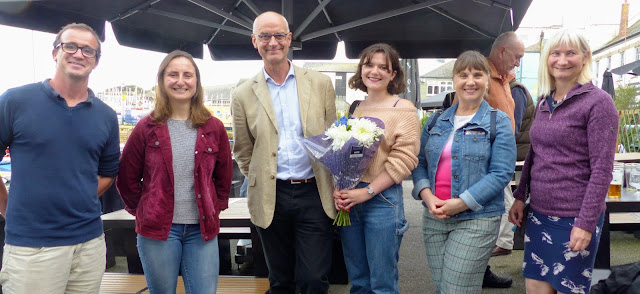At the beginning of the month over 72% of the adult UK population had been fully vaccinated, and there was cautious optimism, as infection rates began to fall, that the worst of the pandemic might be over in UK.
However, the situation in many countries was still a cause for great concern and by the middle of the month cases in UK began drifting up again, worrying as viruses spread less readily in summer. In fact the number of infections was around 30 times that of the same time last year, and although many cases were not serious, due to the intensive vaccination roll-out, there were notes of caution from some scientists that infections in the UK could rise in the autumn and winter as people socialised more indoors.
Covid infections have been rising rapidly in Cornwall, which now has the highest rate of infections in the country, thanks to the G7 event and due to the huge influx of tourists holidaying in the UK, as travel to popular overseas holiday spots has been fraught with uncertainties. Prior to the G7 in June the infection rate was 2.8 per 100,000 and last week it had reached over 800 in 100,000, higher than the infection rate in some red-list countries to which we are not allowed to travel. The infection rate for England as a whole was around 330 per 100,000.
 |
| Falmouth's Gyllyngvase beach 3 days ago |
 |
| A crowded Swanpool beach, Falmouth |
Falmouth is now a Covid hotspot in the county, with Newquay on the north coast having the highest infection rate, and residents and visitors have been asked to stay Covid-aware and take precautions as virus cases increase. Scenes around town during the Falmouth Festival week, held only 3 weeks after outdoor gatherings of more than 30 people were made legal, suggested that these requests were to no avail.
 |
| Falmouth Festival Week |
Despite it taking place in England's worst-hit Covid area, Newquay, the organisers of Cornwall Pride went ahead with the three-day event last weekend with social distancing and masks advised. Sensibly Falmouth's famous Oyster Festival, planned for October, which began in 1996 and celebrates the start of the oyster season, which runs from October to March, has been cancelled.
Super-spreader events seem to have been a feature in UK in recent months, with G7 in June, Euro 2020 in July, and last month a music festival in Newquay was attended by around 50,000 young people, and nearly 5000 Covid cases have potentially been linked to the festival so far. It is evident that the pandemic is far from over, and that we are a long way off our objective of face to face conference meetings. We are keeping our fingers crossed for the IMPC in Melbourne next August, but with over half of Australia currently in lockdown and the borders closed until at least the middle of next year, we are far from optimistic.
A potential 'super-spreader' in November is the UK-hosted 26th UN Climate Change Conference of the Parties (COP26) in Glasgow. Visiting Scotland in the first week of the month, our Scarecrow-in-Chief, Boris Johnson, said to a group of journalists "Thanks to Margaret Thatcher, who closed so many coal mines across the country, we had a big early start and we're now moving rapidly away from coal altogether." He is reported to have laughed and added: "I thought that would get you going."
It got not only journalists going, but many people whose communities were decimated and their livelihoods devastated by the closures of the mid 1980s did not share the joke. Like no other post-war prime minister, Margaret Thatcher polarised public opinion (posting of 17th April 2013), but there is no doubt that her reasons for closing the pits was nothing to do with climate change, it was about breaking the Unions and allowing the import of cheap Polish coal, which was 'dirtier' than the British coal.
 |
| The Times, August 7th |
With COP26 not too far away, media attention has returned once more to climate change and the recent bleak report from the Intergovernmental Panel on Climate Change (IPCC), its first since 2013. With fires raging across Europe and California, and other extreme weather events, it is evident that climate change is a reality and the accumulating scientific evidence confirms that humans are playing a major role in causing it, even if, as some scientists believe, the warming is part of a natural cycle (posting of 10th December 2018).
It is Afghanistan, however, which dominated the news in August, and the decision by the US to withdraw its military from the country by the end of the month, leaving the UK resigned to conclude its rescue operations, fearing that a military presence remaining after the end of the month risked provoking the Taliban, who suggested that there would be "consequences" if international forces stay in the country. The consequences last Thursday, although not at the hands of the Taliban, were too awful to contemplate, the terrorist attacks leaving Afghan men, women and children and US soldiers dead. It is hard to imagine the plight of those left behind.
August was not the greatest of months.
@barrywills















































.png)








.png)

.jpg)






